
|
|
|
|
|
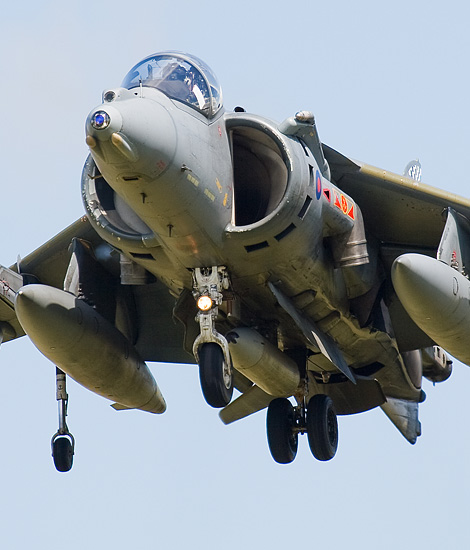
|
United Kingdom Tour Part One; RAF Cottesmore July 13, 2009
The Joint Force Harrier Units; Text and Photograph's by Alex van Noye
On Monday July 13th 2009, my journey through the United Kingdom started at RAF
Cottesmore. Most of the British Harriers are based at Cottesmore. The Harriers on
this base are part of the Joint Force Harrier units (JFH) and are used both by the
RAF and the Royal Navy.
RAF Cottesmore is together with RAF Wittering home of the Harrier fleet of Great
Britain. RAF Cottesmore is situated in the east of England and is located in the
County of Rutland. The Harrier is a fighter with full Vertical Short Take Off and
Landing properties (VSTOL). In other words, it both can take off and land horizontally
as a normal plane and vertically like a helicopter. Next to this advantage, the
disadvantage is that the aircraft has a relatively low speed because of its
construction. It also can not break the sound barrier because of this. The Harrier
was developed by Hawker Siddeley in the United Kingdom in the fifties and sixties.
The first prototypes flew at the end of the fifties of the 20th century and were
tested and developed during the next ten years. From the beginning of the seventies,
the first aircraft were entering service in the RAF; these harriers were designated as
the Harrier GR3.
The U.S. Marine Corps was interested in the Harrier because of its special capabilities
and they developed the AV-8A Harrier which was built under license by McDonnell Douglas.
This type of Harrier differs in some points to the British one like e.g. the engine.
An improved version was developed by the American McDonnell Douglas and the English
British Aerospace (BAe). This improved Harrier was in America known as the AV-8B and in
the United Kingdom as the Harrier GR7. This Harrier is a larger and heavier aircraft
with an improved fuel and weapon capacity compared with the older versions. The first
flight of this improved Harrier type was in 1978. At the same time during the late
seventies, BAe developed for the Royal Navy also the Sea-Harrier FRS1 and later on the
FA2. Its design was based on the Harrier GR3, but had a stronger engine and it was also
equipped with a spherical cockpit like the F-16 for a better visibility. The Sea-Harrier
was equipped with air to air radar and was primarily developed for air defence missions
while the AV-8, the GR3 and the GR7 were designed to provide close air support. The
Sea-Harrier wasn't developed
|
|
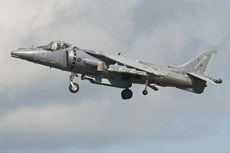
|
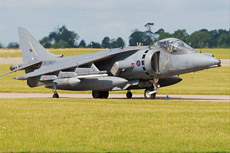
|
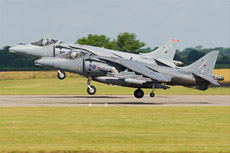
|
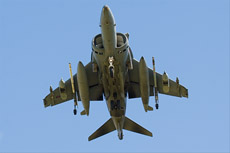
|
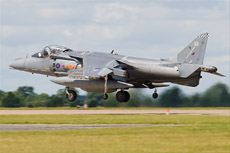
|
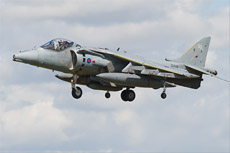
|
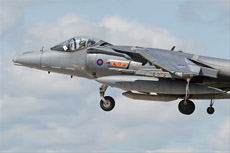
|
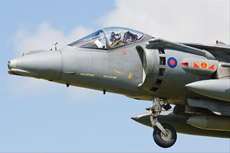
|
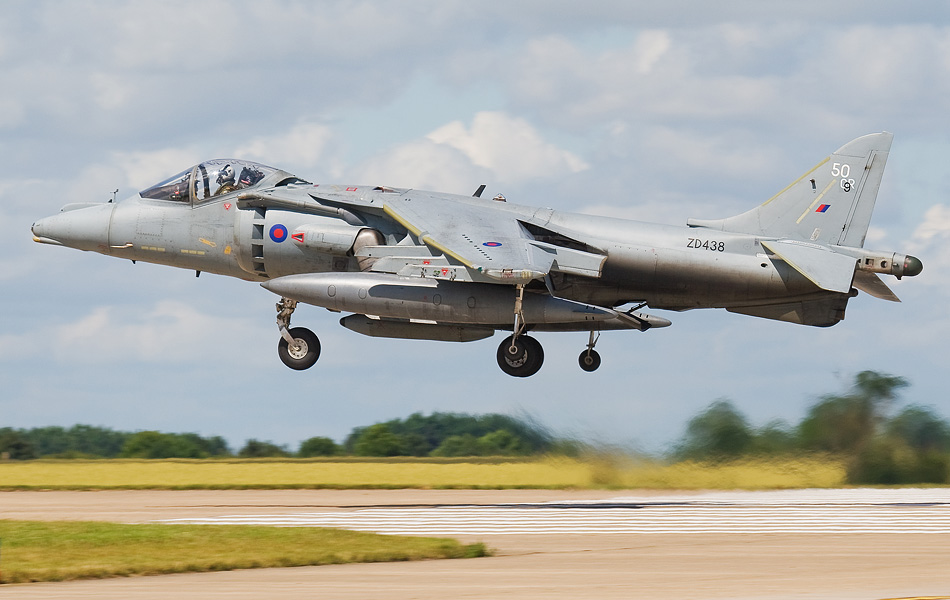
|
further because they retired at the beginning of 2006. The British aircraft carriers
are now equipped with the Harrier GR7 and the Harrier GR9 of the RAF until the Joint
Strike Fighter will enter service in the future.
In 1982 the Sea-Harrier was used in a war for its first time during the Falklands War.
During the Falklands war, the Argentine Air Force and Navy had a numerical advantage of
about 6 to 1 fighter aircraft. The old McDonnell Douglas A-4 Skyhawk of the Argentine
Air Force wasn't really an opponent for the Harrier, but the Dassault Mirage III and
Dassault Super Etendard were both capable opponents for Sea-Harrier. When flying over
the hovering Harriers, the Argentine aircraft were shot down. In this way the Argentines
lost a lot of equipment. Despite to this success of the Harrier fleet, the Royal Navy
lost some ships due to the Exocet raids by Argentine Super Etendard.
I arrived straight in from the Netherlands at about 11 am at RAF Cottesmore after a
journey that has lasted throughout the night. I took position next to the fence near a
crash gate where I could take some decent pictures of the taxiing harriers. After a
while, two Harriers taxied right in front of us to the beginning of the main runway
from where they should take-off. When these two aircraft rolled out in front of me,
I discovered this wasn't the spot to be for today. After a while I decided to walk to
the landing area which was about 1.5 km away. This was a very wise choice, because over
here I was able to stand almost on the taxi track and also it was very easy to take
decent pictures of the incoming Harriers near the runway.
The Harriers came back after 30 minutes of waiting; only three Harriers flew this
morning, sow it wasn't much. Harriers are coming in for landing at a very low altitude
with a very low speed which is quite common at Cottesmore. When they enter the main
runway, all the aircraft are going into a hover above the threshold of the runway; it's
very easy to shoot some decent photographs because of the short distance. The spot at
the landing area of Cottesmore is the most beautiful spot around this base because
close range photography is possible over here. I was also able to take some beautiful
shots on the taxi track of the harriers from multiple angles because I was standing in
the corner of the taxi track where it bends to the runway.
On the first sight it seems to be a quiet day, but this changed when no less than four
Jump Jets came back from Yeovilton. All four of them made several touch and go's before
they came in for full stop; it was very easy to shoot some beautiful photographs of
these harriers because of their slow landing speeds. When all these four harriers were
on the ground, a two hour period of silence followed at Cottesmore. After waiting for a
long period, finally some aircraft started up for the afternoon sortie. There were four
Harriers which taxied in a row behind each other over the taxi track. I was able to
take some photos of all these harriers behind each other on the taxi track; it really
was a beautiful sight. After a while this four ship returned to base and they came in
again with a really slow landing speed. Meanwhile, also an Apache from Wattisham came
in for a fuel stop at Cottesmore; this obviously was a very nice visitor. This base
became very active in the late afternoon; again five harriers started their engines for
another sortie. With all this action, a day which started quiet turned out to be an
active day.
After a relatively short day I left this base at about 5 pm; I didn't sleep last night,
sow I was very tired. RAF Cottesmore was a worthy start of my journey through the
United Kingdom. If this would be the trend of the trip, then its going to be a very
pleasant week in the United kingdom. I was fulfilled and ready to go and I left RAF
Cottesmore inbound RAF Coningsby where I was going to see the British Typhoons.
|
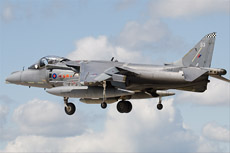
|
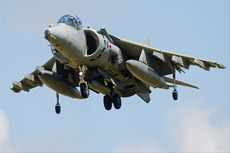
|
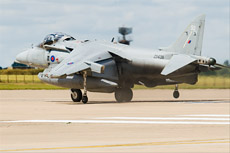
|
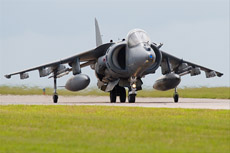
|
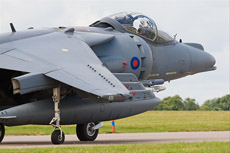
|
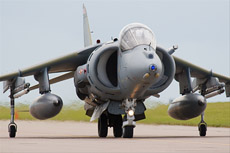
|
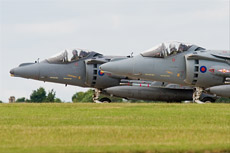
|
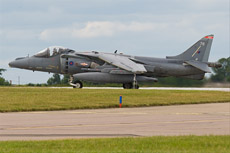
|
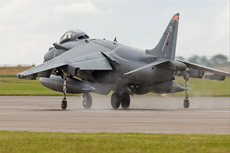
|
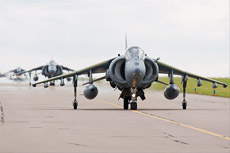
|
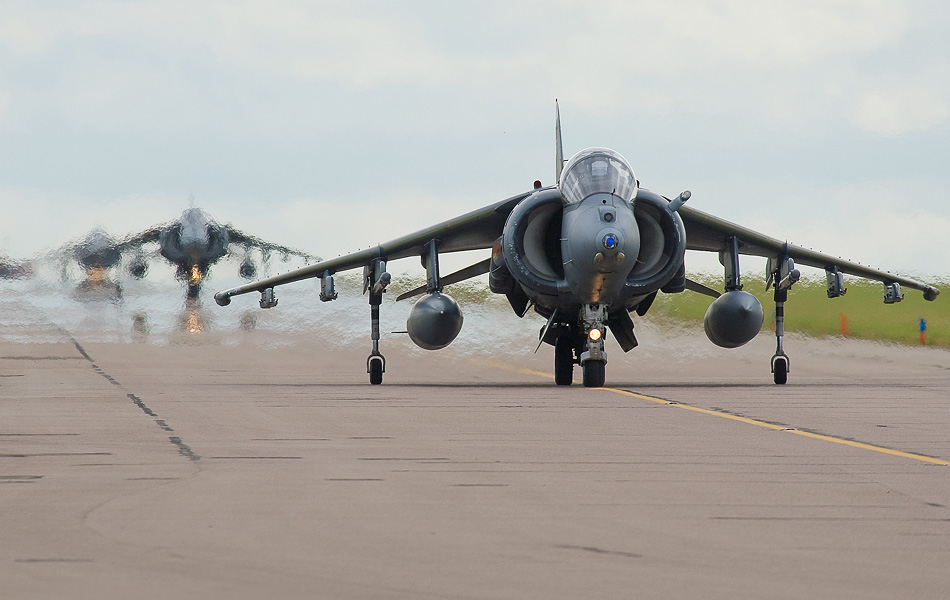
|
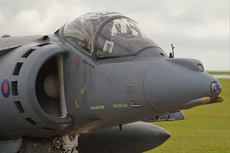
|
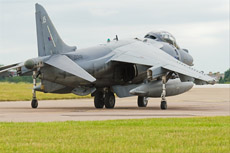
|
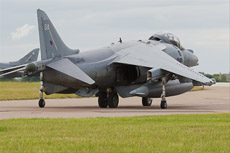
|
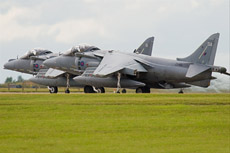
|
|
|

|







